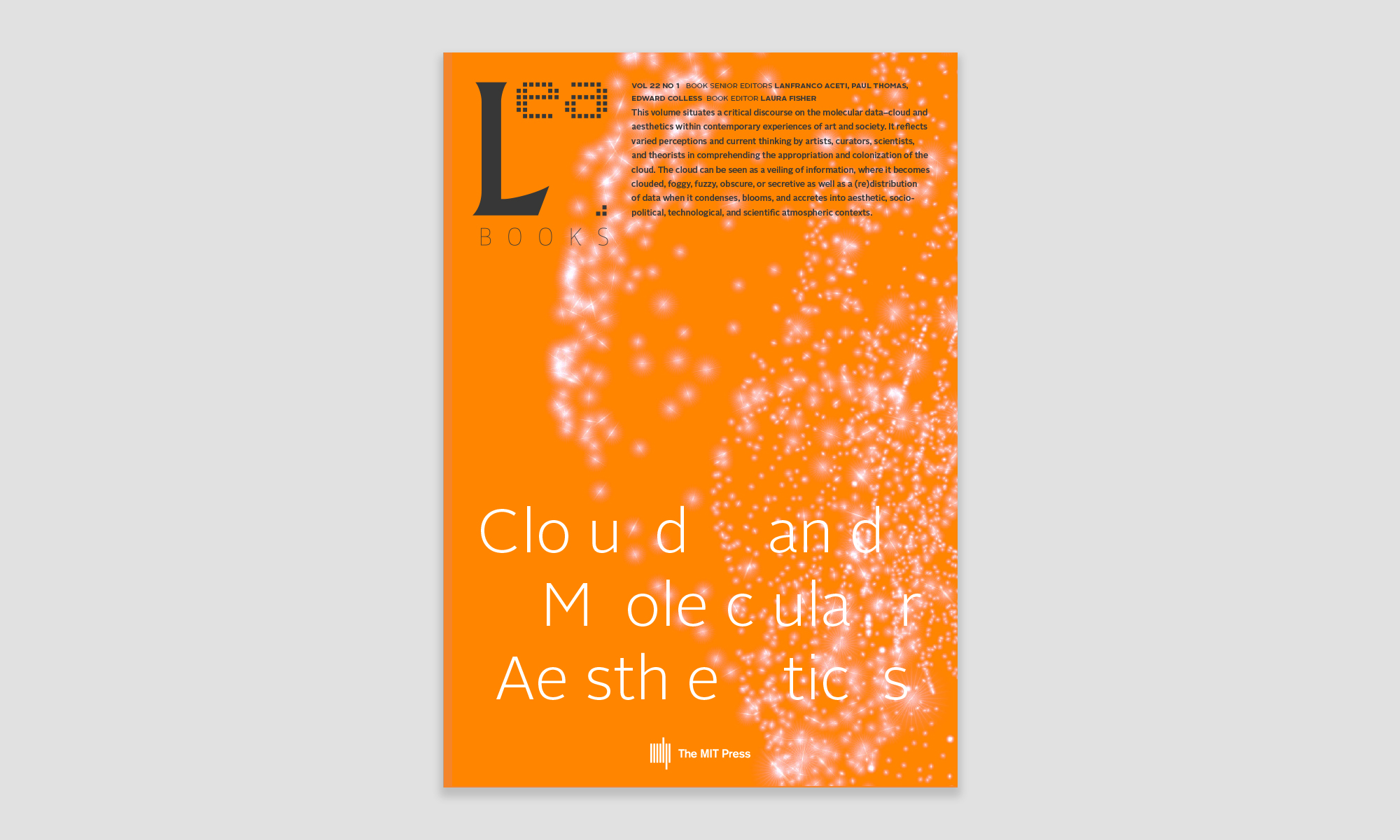Cloud and Molecular Aesthetics
Leonardo Electronic Almanac, Volume 22 Issue 1
Description: This volume situates a critical discourse on the molecular data–cloud and aesthetics within contemporary experiences of art and society. It reflects varied perceptions and current thinking by artists, curators, scientists, and theorists in comprehending the appropriation and colonization of the cloud. The cloud can be seen as a veiling of information, where it becomes clouded, foggy, fuzzy, obscure, or secretive as well as a (re)distribution of data when it condenses, blooms, and accretes into aesthetic, socio-political, technological, and scientific atmospheric contexts.
Senior Editors: Lanfranco Aceti, Paul Thomas, and Edward Colless
Editors: Candice Bancheri, Ashley Daugherty, and Laura Fisher
Reference this volume: Aceti, Lanfranco, Paul Thomas, and Edward Colless, eds. Cloud and Molecular Aesthetics. Cambridge, MA: LEA / MIT Press, 2017.
Published Online: May 15, 2017
Published in Print: To Be Announced
ISBN: 978-1-906897-62-8
ISSN: 1071-4391
DOI: To Be Announced
Repository: To Be Announced
Acknowledgments: The Leonardo Electronic Almanac is a collaborative effort supported by MIT Press, Leonardo/ISAST, Goldsmiths, KHM, New York University (Steinhardt School of Culture, Education and Human Development), OCR (Operational and Curatorial Research), and CAC (Contemporary Arts and Cultures) at MIT.
TABLE OF CONTENTS

